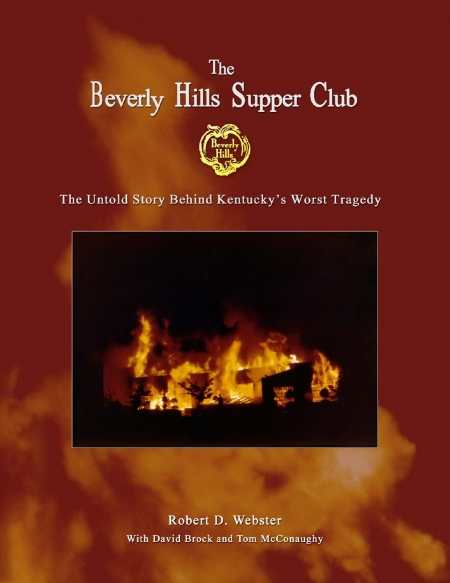
The Beverly Hills Supper Club
The Untold Story of Kentucky’s Worst Tragedy
Thoroughly researched, Webster’s book shines a light on a horrible tragedy and reveals the ugly truth behind a seemingly idyllic Kentucky community.
Though it moves at the pace of a mob thriller, this latest book from Kentucky historian Robert Webster is rooted in tragic reality. Its investigatory pages cover one of the worst nightclub fires in the nation’s history, at the Beverly Hills Supper Club in 1977, and make strong arguments for reconsidering official causes, and for reassigning blame.
Beginning with a history of organized crime in northern Kentucky, the author shows that the fire was likely ignited by arsonists, murderers whose tracks were then covered by those in power. Though the fire itself shocked and galvanized local communities, it was but the worst in a long line of crimes committed against those who didn’t cede to local mob control.
The Beverly Hills Supper Club was one of many which made Southgate, a Cincinnati suburb, a major draw in the early days of prohibition. In an area littered with speakeasies and gambling joints, the club’s various incarnations often emerged as most distinguished attractions. Frank Sinatra played there, and Marilyn Monroe; Ray Charles and Nat King Cole graced its stages.
But the author also details how the club owners’ fortunes often turned against them. The Schillings, its last proprietors, refused to bend beneath the extortion tactics mob bosses threw their way. Their club was torched during construction almost a decade before the fatal fire, but still they remained firm.
Webster recreates the day of the fire with careful attention to detail, presenting its events on a minute-by-minute time line. Making use of witness testimony and established sources, he indicates that many witnessed unfamiliar repairmen behaving suspiciously on the morning of the fire, tinkering with fixtures in the room where the blaze began, applying presumed accelerants to the walls. Such tactics ensured a high death toll; by the night’s end, 169 people had perished.
In the immediate aftermath, Webster shows, much misinformation was disseminated, many false villains constructed. The governor ordered that the area be immediately demolished and cleared, leaving investigators incapable of completing an adequate investigation, and validating suspicions of high-level cover up. It would be decades before the case was re-opened and the facts reconsidered, before community residents and survivors were able to gain a full picture of what happened, and why. Here, too, the author’s work is detailed, objective, and engaging.
Webster has succeeded in recreating the tragedy, and honoring those lost in it, in a way which will pique empathy even in those previously unfamiliar with the events. His accounts of organized crime in Kentucky reveal disturbing truths about an outwardly idyllic area. The book could become a point from which to examine the depth of, and consequences which follow from, institutionalized corruption. His presentation of the fire itself is sensitive in its use of witness testimonies and enumerations of both those lost, and those instrumental in rescue efforts. The Beverly Hills Supper Club is a meaningfully contextualized presentation of an American tragedy, one which shocks, saddens, and angers readers in turn.
Reviewed by
Michelle Anne Schingler
Disclosure: This article is not an endorsement, but a review. The publisher of this book provided free copies of the book and paid a small fee to have their book reviewed by a professional reviewer. Foreword Reviews and Clarion Reviews make no guarantee that the publisher will receive a positive review. Foreword Magazine, Inc. is disclosing this in accordance with the Federal Trade Commission’s 16 CFR, Part 255.
